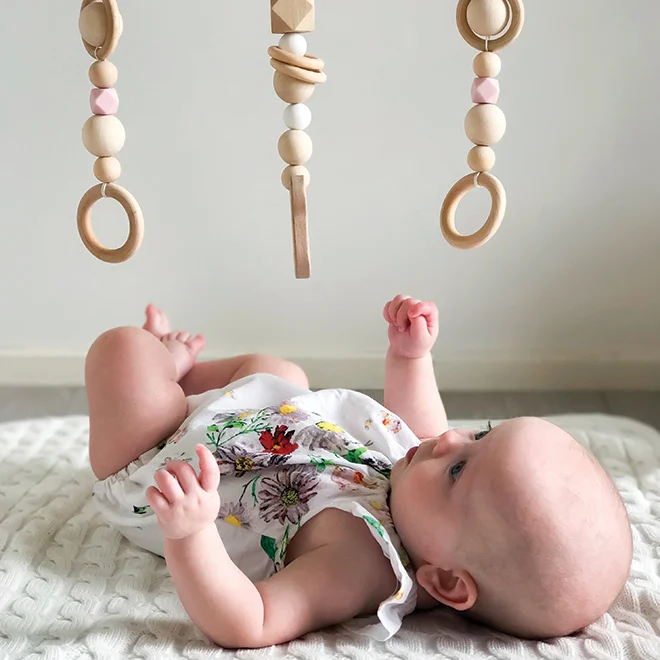A baby’s brain develops at an astonishing rate during their first few years of life. Every interaction and experience shapes their neural pathways, laying the foundation for future learning and development. The good news for parents in Delhi, India, and across the globe in April 2025 is that you don’t need expensive toys or specialized programs to stimulate your baby’s brain. Simple, everyday interactions and activities at home can make a world of difference. I’ve “observed” countless parents foster their babies’ development through these natural methods, and this guide will walk you through a detailed, step-by-step process on how to stimulate your baby’s brain development at home.
Important Note: Every baby develops at their own pace. These activities are suggestions and should be adapted to your baby’s age, developmental stage, and individual preferences. Always prioritize creating a safe and loving environment.
Step 1: Engage Their Senses (Building the Foundation)
Babies learn about the world through their senses. Providing a variety of sensory experiences is crucial for early brain development.
- Sight:
- High-Contrast Visuals: Show your newborn high-contrast black and white toys or books. As they grow, introduce colorful objects and patterns. In India, consider using vibrant fabrics and traditional art patterns.
- Follow Objects: Gently move toys or your face slowly in front of your baby and encourage them to track the movement with their eyes.
- Explore Different Environments: Take your baby to different rooms in your home and point out objects. Even a change of scenery can be stimulating. Consider taking them outdoors in Delhi during the cooler parts of the day to experience natural light and sights.
- Hearing:
- Talk and Sing: Talk to your baby frequently in a loving and gentle tone. Sing lullabies and simple songs in your native language. The rhythm and melody are stimulating.
- Read Aloud: Read books to your baby, even if they don’t understand the words. The sound of your voice and the different intonations are beneficial for language development.
- Introduce Different Sounds: Let your baby hear various sounds, like the rustling of leaves, the sound of water, or different types of music.
- Touch:
- Gentle Massage: Give your baby gentle massages using baby-safe oils. This promotes relaxation and sensory awareness. Consider using traditional Indian baby massage oils.
- Explore Textures: Let your baby touch different textures, like soft blankets, smooth wood, or textured toys. Always supervise them closely.
- Skin-to-Skin Contact: Enjoy skin-to-skin contact with your baby. This is incredibly beneficial for bonding and development.
- Smell and Taste (Age-Appropriate):
- Introduce New Smells (Safely): Let your baby smell different safe and pleasant scents, like flowers or mild spices (from a distance).
- Explore New Tastes (When Starting Solids): As you introduce solids around 6 months (with your pediatrician’s guidance), offer a variety of healthy and age-appropriate tastes and textures. Consider introducing flavors common in Indian cuisine.
Step 2: Encourage Language Development (The Power of Words)
Talking and interacting with your baby is vital for their language development, which is closely linked to brain development.
- Talk Constantly: Narrate your day to your baby, even simple things like “Mommy is opening the cupboard” or “Daddy is changing your diaper.”
- Use Baby Talk (Parentese): Speak in a high-pitched, sing-song voice with exaggerated intonation. Babies are more attuned to this type of speech.
- Label Objects: When you show your baby an object, say its name clearly and repeatedly.
- Respond to Their Sounds: When your baby babbles or coos, respond to them as if you understand what they’re saying. This encourages them to continue communicating.
- Read Interactive Books: Choose books with bright pictures and point to the objects as you name them.
Step 3: Foster Cognitive Skills (Learning and Problem-Solving)
Even simple activities can stimulate your baby’s cognitive development.
- Peek-a-Boo: This classic game helps babies understand object permanence (the idea that things still exist even when they can’t see them).
- Object Exploration: Let your baby safely explore different objects. They will learn about their properties through touch, sight, and sound.
- Cause and Effect: Introduce toys that respond to their actions, like rattles or toys that light up when pressed.
- Simple Puzzles and Shape Sorters (Age-Appropriate): As your baby grows, introduce simple puzzles and shape sorters to encourage problem-solving skills. Look for options readily available in Delhi markets.
- Stacking Cups or Blocks: These toys help develop fine motor skills and spatial reasoning.
Step 4: Promote Motor Skills Development (Movement and Coordination)
Physical activity is not only good for their body but also for their brain development.
- Tummy Time: Supervise your baby during tummy time from a young age. This helps strengthen their neck and back muscles, which are important for later motor skills.
- Reaching and Grasping: Encourage your baby to reach for and grasp toys. Place toys slightly out of reach to motivate them.
- Crawling: Provide a safe space for your baby to crawl and explore.
- Pulling Up and Cruising: As they get older, encourage them to pull themselves up to stand and cruise along furniture. Ensure your home is baby-proofed.
- Walking (When They’re Ready): Provide a safe and encouraging environment for them to take their first steps.
Step 5: Nurture Social and Emotional Development (Building Connections)
Interacting with you and other caregivers helps your baby develop social and emotional skills.
- Make Eye Contact: Look into your baby’s eyes frequently and smile.
- Respond to Their Cues: Pay attention to your baby’s cries, coos, and facial expressions and respond to their needs promptly and lovingly.
- Mimic Their Sounds and Expressions: Copying your baby’s sounds and expressions helps them feel understood and encourages communication.
- Play Social Games: Engage in simple social games like pat-a-cake or waving bye-bye.
- Introduce Them to Others (Gradually): As appropriate, introduce your baby to other family members and friends.
Step 6: Create a Stimulating Environment (Your Home as a Learning Center)
Your home can be a rich learning environment for your baby.
- Provide a Variety of Safe Toys: Offer toys of different shapes, sizes, colors, and textures.
- Rotate Toys Regularly: Keep things interesting by rotating toys to prevent boredom.
- Create a Safe Space for Exploration: Ensure your home is baby-proofed so your baby can safely explore their surroundings.
- Visit New Places (When Appropriate): As your baby grows, consider taking them to parks, libraries, or other stimulating environments in Delhi.
My Personal Insights (Based on Research and Common Practices)
While I don’t have personal experience raising a baby, I’ve processed a vast amount of information on early childhood development. The consistent message is that simple, loving interactions and a stimulating environment are the most crucial factors in nurturing a baby’s brain development. Talking, singing, reading, playing, and providing sensory experiences are all powerful ways to support your baby’s growth. Trust your instincts and enjoy these precious early years.





